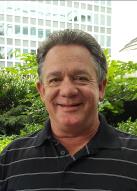|
IEEE-Northwest Energy Systems Symposium (NWESS) |
|
University of Washington Seattle, WA 98195 April 27-28, 2016 |

|
NWESS Speakers |






|
The New Denny Substation
Tuan will describe the planned new Denny Substation. The Denny Substation is a greenfield substation construction project in the South Lake Union area of Seattle. The Denny program includes the new substation, distribution networks, a new cross town transmission line and a cut in to an existing high pressure fluid filled cable.
Tuan Tran has been employed as Executive Director of Energy Delivery Engineering, a department within Seattle City Light since June 2010. He leads the continuing effort to improve City Light engineering work processes, managing capital budgets, and provides strategic leadership for transmission and distribution design engineering Department. These decisions involve broad organizational policy regarding transmission, substation and distribution system design, capital projects, customer service design for new service connections, system improvements, relocations, reconfiguration, local and regional system planning, and implementing Automation and Smartgrid programs.
Tuan has 25+ years of utility experience. He has a Bachelor of Science degree in Electrical Engineering from Gonzaga University. He is a registered professional engineer in Washington State. He also teaches System Automation/Smart Grid and Systems Operator Planning courses at Gonzaga.
Tuan was previously employed with Tacoma Power for 15 years, where he managed the Utility transmission and distribution system planning and operations. He led many high profile projects including construction of substations, interconnections for generation, and compliance with standards set by the North American Electric Reliability Corporation (NERC) and the Western Electricity Coordinating Council (WECC). Prior to Tacoma Power, he was employed at Puget Sound Energy as Information Technology and Distribution Design Engineer. |
|
IEEE 1547 Standards for the Interconnection of Distributed Resources with Electric Power Systems Overview and Current Activity. IEEE 1547 set of standards provide technical standards as well as expanded guidelines for interconnection of distributed energy resources with power systems. Many utilities or their regulators use IEEE 1547 by reference in their interconnection rules. Having this single consistent standard has benefited all stakeholder since its creation in 2003. However, industry changes now call for revisiting and revising some of the standard contents. This presentation would summarize what IEEE 1547 is, how it is used, the revision scope and timing. Charlie Vartanian is the Northwestern Sales Manager for Mitsubishi Electric Power Products, Inc. (MEPPI). MEPPI provides power equipment and turnkey projects in the North American utility market. Charlie has 25 years of power industry experience marketing advanced power solutions, performing electric system studies, and contributing to IEEE technical standards development including leadership roles in IEEE 1547 and IEEE 2030.2 working groups. At MEPPI Charlie contributes to new product development and sales management. He's previously worked on advanced grid technology topics including DER, microgrids, and energy storage at UET, DNV KEMA, and A123 Systems. Earlier, at Southern California Edison, Charlie's activities spanned traditional T&D planning through advanced technology R&D. |

|
PSE Renewable Energy Programs
With over 3000 installations there are lot of statistics available about production and impacts. Jake would also cover what PSE/he sees the future may be looking like with technology changes, costs to install and production costs, impact to rates of renewables, state and federal regulations impact.
Jake Wade is the Net Metering Program Manager for Puget Sound Energy. He manages the interconnection process and customer experience for renewable energy customer generation under 100 kW. He also manages PSE's involvement in Washington State's Renewable Energy Cost Recovery Program. Jake also supports PSE's electric vehicle program. Jake joined PSE in 2006 as an Energy Advisor before moving to PSE's Green Power Program. Prior to joining PSE, Jake worked in marketing in both the computer software and hardware industries. Jake holds a BA in Political Science and a BA in International Studies from the University of Washington. |

|
Our Energy Future
Clean energy. Energy efficiency. Competition for customers. Reliability and distributed generation. These are just some of the issues facing the energy industry.
Kimberly Harris is the President and CEO of Puget Sound Energy, Kimberly is focused on providing PSE customers with safe, dependable and efficient energy service. With Kimberly influence, PSE has become a national leader in energy efficiency and renewable resources. The result is a balance between reliably serving customers today and looking toward the future in energy delivery. |
|
Incident Response and Continuity Planning for NW Utilities.
Snohomish PUD is responsible for electric utility disaster response throughout Snohomish County, and Camano Island in Island County. The presentation will consider emergency response, customer and media communication, organizational structure in an emergency, region-wide and national utility response coordination, coordination with local public agencies, and working with neighboring utilities. The District goal is to improve reliability to our customers by a combination of best traditional practices and implementing appropriate new technologies over time.
Chris Heimgartner joined the Snohomish PUD in May 2009 with over 28 years of experience in the electric utility industry and having served in a variety of leadership roles throughout his career. Chris worked with Seattle City Light as its Customer Service & Energy Delivery Officer from 2006-2009. Prior to 2006, Chris worked for Pacific Gas & Electric Company in California for 25 years. During those years at PG&E, Chris served as the Fresno division construction superintendent and managed an electrical distribution system with more than 13,000 miles of distribution wire, 285 feeders and a combined annual capital and operating budget of $46 million. Chris holds a bachelor's degree in Electric Power Engineering from Rensselaer Polytechnic Institute and a master's in Business Administration from St. Mary's College. |
|
Incident Response and Continuity Planning for NW Utilities
Seattle City Light has an important responsibility to respond and coordinate utility disaster response in the greater Seattle City Light service area. This discussion will consider utility requirements for emergency response, incident command and control, operational challenges related to communication over a large regional area and coordination of mutual aid with other public agencies. The goal to ensure and respond to disruption of reliable grid operations will require implementing innovative technologies over time. Crisis management and business continuity are critical to enable resumption of utility generation to maintain regional reliability.
Jerry J. Koenig has been the Emergency Manager for Seattle City Light since 2008 building a preparedness program promoting mitigation, response, and recovery. Prior to joining City Light, Jerry worked for the State of Alaska Division of Homeland Security and as a consultant. He served 20 years in the United States Air Force as a firefighter and emergency manager. Jerry graduated from Western Oregon University with a degree in Fire Service Administration. |
|
Distributed Energy Resources
The rapid growth in distributed energy resources (DERs) has the potential to adverse effect utility finances by undermining the ability to recover fixed costs. The traditional response would be to increase retail rates. However, the effect of this approach is to foist an ever greater proportion of fixed costs on customers without DERs, customers who as a group are generally more financially challenged than are customers with DERs. This presentation provides an overview various ways that DERs affect utility costs and revenues, and the effect of various financial stabilizing strategies on utility customers without DERs.
Nicolas Garcia is an Assistant Manager in the Power Management section of Tacoma Power. As manager of the Energy Resource Planning and Evaluation unit, Nicolas is responsible for long-term resource planning, conservation planning and evaluation, compliance with the Energy Independence Act, long-term energy price forecasting, administering major supply and load contracts, and regional transmission planning (through ColumbiaGrid). He is active in a number of regional forums such as the NWPP (most recently on the effort to establish a NW Energy Imbalance Market), the Public Generating Pool and works closely with Tacoma Power legislative liaison to assess the implications on the utility of legislative bills. Prior to Tacoma Power, Nicolas worked at the Washington Utilities and Transportation Commission (WUTC), the Washington State Energy Office, the Washington Department of Ecology, the Federal Office of Management and Budget and the US Army Corps of Engineers. Nicolas has a Bachelor Degree in Civil Engineering and a Master Degree in Public Policy. |

|
Incident Response and Continuity Planning for NW Utilities.
Bonneville Power Administration has an important role providing electricity to the people of the Northwest. BPA takes this responsibility seriously and is preparing its system and staff to more effectively respond to a disruptive incident. This discussion will cover the work BPA is doing to prepare for a wide-scale disaster such as the Cascadia Subduction Zone earthquake and what other utilities can do to be ready. Some of the topics will be general preparedness, planning, alternate facilities, mutual assistance and incident management. These are all topics that can contribute to regional participation in the upcoming FEMA Cascadia Rising exercise in June of 2016.
Eric Heidmann is the manager of Continuity of Operations and Emergency Management at the Bonneville Power Administration in Portland, Oregon. He oversees the planning and strategic direction the agency is taking to prepare for a wide variety of potential disruptive impacts. This includes the identification of critical business processes, continuity plans, identification of people who may need to operate from another location in an emergency, test, train and exercise program and emergency response activities. He has been with BPA for over 24 years and has held previous positions within Corporate Services, Transmission Services and Public Affairs. Eric Grew up in Michigan and graduated from Marylhurst University. He lives with his wife and 3 children in Happy Valley, OR |

|
Solar Energy
I will explore factors driving the solar market in the Northwest from a solar installers perspective. Topics include costs and incentives. Customer demand for choice, independence. and resiliency will be discussed as well as trends in technology and deployment at various scales.
Reeves Clippard pursued his entrepreneurial, environmental and social values after a short stint in web app development and tech support. He received training in solar, wind and hydro technologies at Solar Energy International in Colorado in 2005. After a year as an entry level solar installer, Clippard saw a real need for providing a better customer and employee experience in solar contracting and co-founded A&R Solar in 2007. The company is one of Washington's Top Fastest Growing Companies for the last three years running. A&R Solar deploys solar at all scales across Washington and Oregon. |
|
Because of the rapid growth in distributed energy resources (DERs), utility financial stability is facing greater uncertainty. To address this concern, both utilities and regulators have begun to explore a number of strategies to not only stabilize utility revenue but also to create an environment in which both utility resources and customer-owned resources can flourish. These solutions include revenue decoupling, retail rate restructuring, and utility ownership of (and investment in) customer-sited generation. Each of these approaches is being met with different responses. For the most part, consumers and consumer advocate groups are vehemently opposed to rate restructuring that includes significant fixed charges. Solar advocates are opposed to special network and/or demand charges being assessed on customers with rooftop solar. And due to economic and anti-trust concerns, many are skeptical of utility ownership of rooftop solar. While the majority of utility revenue stabilizing strategies are founded on the premise that DERs have a negative financial impact on utilities, an emerging approach is for utilities to embrace DERs by finding economic value in both their energy and non-energy properties. This presentation provides an overview various utility revenue stabilizing strategies with an emphasis on the emerging methods of revenue stabilization through valuing distributed energy resources.
Ahlmahz Negash graduated from the University of Washington with a PhD in Electrical Engineering. Her research interests include renewable energy integration and valuing distributed energy resources. She is currently a visiting research fellow in the Department of Industrial Economics and Technology Management at the Norwegian University of Science and Technology. |


|
Robert Pratt leads PNNL distribution and demand response market sector, responsible for technology and business strategy associated with a wide range of smart grid devices and systems. As one of the early thought leaders behind the smart grid in 2000, he led PNNL GridWise Initiative that was seminal to the formation of the GridWise DOE Program, industry Alliance, and Architecture Council, and managed PNNL Smart Grid Program from 2005 to 2013. He leads PNNL focus on transactive control technology which focuses on real-time price- or incentive-based closed-loop coordination schemes for distributed energy resources (DERs) of all types, and valuation of the benefits derived from DERs. Mr. Pratt is an expert in advanced demand response and energy efficiency technology with deep knowledge both theoretical, empirical, and design aspects of residential and commercial buildings and end-use loads. He conceptualized DOE GridLAB-D smart grid simulation, an open-source tool spanning distribution power flow, loads, distributed energy resource device models, and distribution/retail market operations. Mr. Pratt specified GridLAB-D end-use load and demand response models. |

|
Commissioner Philip Jones was appointed by Governor Chris Gregoire in March 2005, re-appointed in January, 2011 and confirmed unanimously by the Washington State Senate. Commissioner Jones served as President of NARUC (National Association of Regulatory Utility Commissioners) in 2012-13, and presently serves on its Board of Directors. He previously chaired and served on the Board of Directors of NRRI (National Regulatory Research Institute). He served on the Telecommunications Committee and the International Relations Committee since 2005. He also served as Co-Chair of the Washington Action Committee. He previously served on the Advisory Council of the Electric Power Research Institute (EPRI), which is the public interest council to advise electric utilities on R&D priorities. Prior to his commission appointment, he served as managing director of Cutter & Buck (Europe), BV in Amsterdam for five years. From 1983 to 1988 he served as senior legislative assistant to Senator Daniel J. Evans, the former U.S. Senator from Washington State, and staffed him on energy policy issues before the Senate Energy and Natural Resources Committee, and international trade policy. He was responsible for a broad range of energy issues, including hydroelectric re-licensing, nuclear waste management, energy conservation and renewable, and the Bonneville Power |
|
Energy Storage System Over the past four years the Snohomish County PUD has planned, engineered and installed its first energy storage system. The system is a 2MW/1MWh Lithium Ion Storage System built on the Modular Energy Storage Architecture (MESA). It is connected into a substation 12kV bus and tied into the substation data network allowing it to be dispatched from the Energy Control Center and Power Scheduling. The presentation will give an overview and lessons learned of the design process, MESA standards, construction, commissioning, acceptance testing and operation. It will also give insights to what Snohomish PUD has learned about battery technology, but this will not be vendor specific. MESA is an open standard for energy storage that focuses on the physical, electrical, and communication interconnection of components in an energy storage system. The standard aims to reduce the complexity of the systems and drive down costs. Jason Zyskowski received his BS in electrical engineering from the University of Washington in |

|
Hydro System Operations
Bonneville Power Administration is responsible for management of the federal hydro system and the associated BPA transmission system. Kieran Connolly will talk about hydro system operations and will provide a Bonneville Power Administration view of the operational challenges associated with management of the Federal Hydro System, in coordination with other regional hydro and thermal generators. Kieran will take a look at what our future might look like and what operational decisions might be associated with future baseload and renewable generation to maintain regional reliability.
Kieran Connolly is the Bonneville Power Administration Vice President of Generation Asset Management in Power Services. Managing the federal system with our partners (the US Army Corps of Engineers, the Bureau of Reclamation and Energy Northwest) to meet the multiple purposes it serves, is fundamental to the success of BPA and the region. Connolly was promoted to vice president in October 2014. Before that he served as BPA manager of Generation Scheduling, which includes hydroelectric scheduling of the 31 dams in the Federal Columbia River Power System, day-ahead system planning and policy issues that impact real-time power system operations. Connolly has also managed Regional Coordination in Power Services Generation Asset Management Power and Operations Planning group. That job required knowledge of long-term hydro system modeling, coordination with Canada on river operations and the integration of fish operations in overall system planning. Connolly began his career at BPA in 1991 as a supply system analyst. He holds a B.S. degree in Business Economics from Willamette University and a Master in Business Administration from the University of Portland. |

|
Energy Imbalance Market
Talk covers the basic introduction of what the Energy Imbalance Market is, what benefits the EIM is expected to provide for PSE and its customers, and how it will be implemented (including the issues and systems impacted).
Theresa Burch has been employed by Puget Sound Energy since 1996. Her current position is Manager of Energy Delivery and Energy Imbalance Market Program Manager. Her past experience includes meter engineering, meter data management and data integrity. The EIM Project is the third large multi-year project at PSE that Theresa has been involved in. Past projects include implementation of PSE Automated Meter Reading system, and the company first Meter Data Management System. |
|
Distribution Renewable Integration and Operations
The conventional practice of retail electric utilities is to purchase electricity for customers via bulk transactions on the wholesale market, and it passes these costs along to its customers. Typically, all residential consumers are offered the same per unit rate plan, which leads to cost sharing. Some consumers use their electricity at peak hours, when it is more expensive on the wholesale market, and others consume mostly at off peak hours, when it is cheaper, but they all enjoy the same per unit rate through their utility. In this talk, we discuss a method for the utility to segment a population of consumers on the basis of their individual consumption patterns. An optimal recruitment algorithm is developed to aggregate consumers into groups with a relatively low per unit cost of electricity on the wholesale market. We also discuss the tradeoff between group size and forecasting accuracy, showing that the load of a group of relatively small size can be forecasted accurately.
Baosen Zhang is an Assistant Professor in the department of Electrical Engineering at the University of Washington. He received the B.A.SC degree in engineering science from the University of Toronto, Toronto, ON, Canada, in 2008 and the Ph.D. degree Department of Electrical Engineering and Computer Science, University of California at Berkeley in 2013.Before joining UW, he was postdoctoral scholar at Stanford University. |

|
Deploying integrated systems to improve resilience, reliability and flexibility for Snohomish County PUD Customers
Snohomish County PUD has been deploying systems and processes to provide increased supply reliability and resiliency to their electric customers as part of their Smart Grid Strategy. This presentation will share the status of these systems deployments to date and discuss the realized and expected benefits of continued investment in integrating operations systems (SCADA, DMS and OMS) with enterprise systems (MWFM, Damage Assessment).
Will Odell is the Smart Grid Program Manager for Snohomish County PUD. As the smart grid team leader he is responsible for research, evaluation and selection of new technologies that will be integrated into the PUD electrical grid including distribution and substation automation, communications, AMI, distributed generation, distribution management systems, outage management systems and energy storage.
Will has more than 25 years of experience in the energy industry working in both public and investor owned organizations. Will holds a BS in Mechanical Engineering from North Carolina State University and an Executive MBA from the University of Washington. |




|
Ethan Boardman is Technical Director for Advanced Distribution Management Systems (ADMS) with GE Grid Software Solutions. Since 1997 he has worked on the development of the ADMS product line for support of Distribution Operations with an emphasis on a single modular system providing SCADA, DMS, and OMS functionality. Ethan served for 10 years as ADMS Marketing Product Manager and Business Development Director. His focus is now on technical business development and consulting around ADMS encompassing distributed energy resources (DER). Ethan joined GE, then ESCA Corporation, in 1982 as a network analysis applications engineer and developer. He has worked in the areas of both EMS and DMS product development and project implementation. Ethan Boardman earned his BSEE and MSEE from the University of Washington. |